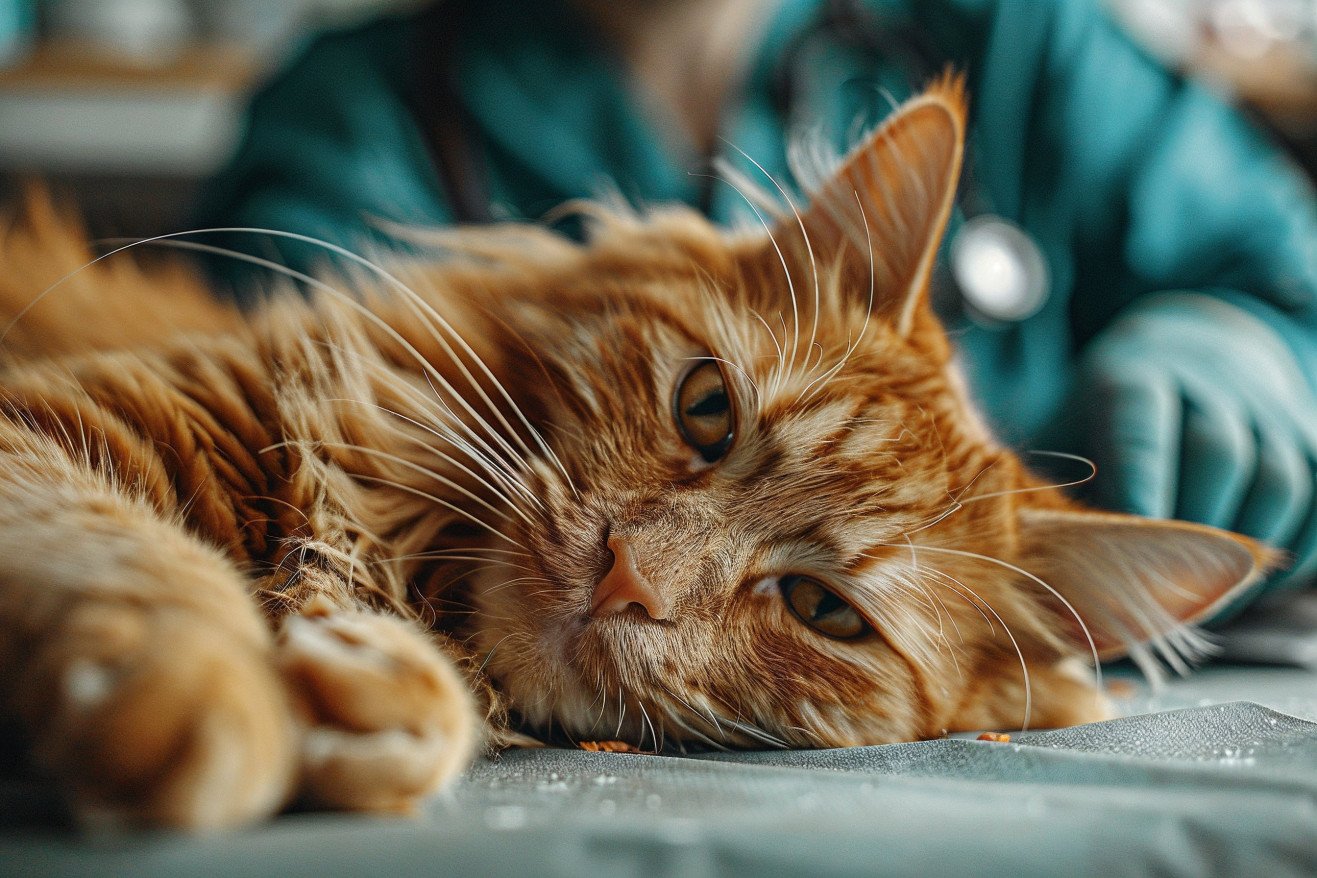Bot Fly Larvae in Cats: Symptoms, Prevention, and Treatment
9 May 2024 • Updated 9 May 2024

How can you tell if your cat has been infected with bot fly larvae, and what can you do to get rid of them? Bot flies are a type of fly whose larvae grow inside the bodies of mammals, entering through the host's skin, nostrils or mouth. While the idea of bot fly larvae in cats is pretty gross, the larvae are usually harmless if they're removed by a vet, and the flies are a valuable part of many ecosystems.
To help you better understand how to recognize a potential bot fly infestation and how to respond when one is detected, we'll take a deep dive into the research on this topic from the fields of veterinary medicine, entomology, and parasitology. Through a review of scientific research and expert recommendations, you'll learn about the life cycle of bot flies, how to prevent your cat from getting infected, and the best ways to remove botfly larvae from your cat.
Can cats get bot fly infections?
How to Tell If Your Cat Has Bot Fly Larvae: Signs and Symptoms
The most common way to tell if your cat has bot fly larvae is to look for the presence of swollen lumps or lesions on the skin, which will have a small opening in the center for the larva to breathe. As noted by The Spruce Pets, these lumps can appear anywhere on the cat's body, but they are most often found around the head and neck. Sometimes, the larva can be seen moving under the skin.
In addition to the lumps, cats with bot fly larvae may also show other signs of infestation, including licking or grooming the affected area more than usual, matted fur around the lumps, respiratory symptoms such as coughing or nasal discharge, and neurological symptoms according to PetCareRx and the National Institutes of Health.
That said, it's important to note that bot fly larvae can be present in cats without any external signs at first. As explained by the Belle Mead Animal Hospital, the larvae can enter the body through small wounds or orifices and then grow to a size that causes lumps and lesions.
Because of this, it's important to check your cat regularly for bot fly larvae, especially during the late summer and early fall when bot flies are most active. Knowing what to look for and checking your cat regularly can help ensure that you catch the problem early and seek veterinary care before the infestation becomes more serious.
Veterinary Treatment Options for Bot Fly Removal
Veterinarians have a number of ways to remove bot fly larvae from cats. According to PetCareRx, one common method is surgical removal, which involves making an incision to take out the larvae. Other options include using special tools to extract the larvae or giving anti-parasitic drugs like ivermectin to kill the larvae.
As noted in the National Institutes of Health study, it's important for veterinarians to remove all bot fly larvae to prevent complications and the infestation from spreading. In some cases, other medications like antibiotics, corticosteroids, and pain relievers may be used to treat secondary infections and inflammation.
Because of the potential complications and dangers of bot fly infestations, Belle Mead Animal Hospital warns against trying to remove the larvae at home. Professional veterinary care is needed to safely and successfully treat the infestation and ensure the cat isn't harmed in the long run.
How to Avoid Bot Fly Infestations in Cats
The best way to avoid bot fly infestations in cats is to keep them indoors, says Catster. Cats that are allowed to go outside and hunt for rodents are at the highest risk for coming into contact with bot fly larvae. In addition, monthly topical or oral parasiticides can be used to prevent bot fly infestations, although their efficacy can be inconsistent.
Tail Wagging Bakery suggests that cat owners check their outdoor cats regularly, especially during the late summer and early fall, which is the peak season for bot flies. During this time, the flies are most active and the risk of infestation is highest. In addition, cat owners can reduce the risk of infestation by keeping cats away from areas with high rodent or rabbit populations, as this is where bot flies lay their eggs.
Finally, maintaining good sanitation and sealing up any potential entry points for larvae in and around the home is important, according to the Parasites & Vectors review. By doing these things, cat owners can help prevent their cats from being infested with bot flies.
Risk Factors and Susceptibility to Bot Fly Infestations
The likelihood of outdoor cats that hunt and roam being exposed to bot fly larvae is much higher, according to the Parasites & Vectors review. Other factors that can increase susceptibility to infestation include poor hygiene, open wounds, and living near rodent or rabbit populations. The Merck Veterinary Manual also explains that kittens can be infected through their mother's milk.
There may be a higher prevalence of bot fly infestations in cats in certain geographic areas, such as the northeastern United States, according to the case report from the National Institutes of Health. While the risk of cats transmitting the infestation to humans is very low, the University of Florida entomology department says that the human bot fly can use a number of warm-blooded animals, including cats, as hosts.
Potential Risks and Long-Term Outcomes
If not treated, bot fly larvae can migrate to the brain, eyes, or respiratory system, according to a study from the National Institutes of Health, which can cause neurological issues like seizures, blindness, and abnormal behavior.
Moreover, VCA Animal Hospitals explains that the bacterial infections that can occur as a result of the skin lesions can cause complications. While it's uncommon, ScienceDirect explains that in severe cases that go untreated, cats may experience paralysis, vision and mobility issues, and problems with hunting.
That said, the outlook is good with proper veterinary care, according to VCA Animal Hospitals. It's important to get treatment early so that the larvae can be removed safely and to prevent any long-term issues. With the right treatment, most cats will recover fully.
Wrapping Up: Managing Bot Fly Larvae in Cats
Bot fly infestations in cats can be worrisome, but most cats will make a full recovery with proper veterinary care. The most important thing is to know the signs to look for, which include swollen lesions, excessive licking or scratching, and neurological symptoms. The best way to prevent bot fly infestations is to keep your cat indoors and use monthly parasiticides.
In addition to regular check-ups, especially during bot fly season, this can help ensure that any infestations are caught early. While the consequences of an untreated infestation can be severe, including the migration of larvae to the brain, the outlook is good if the infestation is treated promptly. If you suspect your cat has bot fly larvae, contact your vet immediately to ensure that they receive the care they need.


